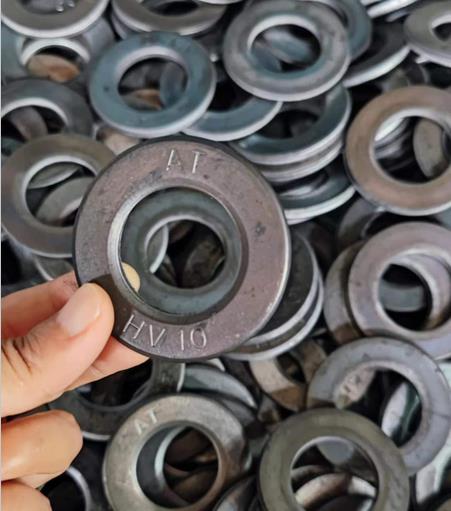odm split lock washer vs flat washer
Understanding the Differences Between Split Lock Washers and Flat Washers
When it comes to fastening components together in mechanical assemblies, the choice of washer can significantly impact the performance and longevity of the connection. Among the most commonly used types of washers are split lock washers and flat washers. Although they may seem similar at first glance, their design and intended function serve distinct purposes in various applications. This article will explore the differences between split lock washers and flat washers, their uses, advantages, and factors to consider when selecting the appropriate type for your project.
What is a Split Lock Washer?
A split lock washer, also known as a helical spring washer, is specifically designed to prevent loosening of fasteners due to vibration and dynamic loads. Its construction features a split or cut that creates a helical shape, allowing the washer to exert a spring-like action. When compressed under a nut or bolt, the split lock washer pushes against the fastener and the surface it's mounted on, generating friction that helps to resist rotational movement.
Split lock washers are commonly used in environments where vibration is prevalent, such as in automotive applications, heavy machinery, or appliances. They can effectively keep assemblies tight over prolonged use, reducing the risk of component failure and ensuring safety.
What is a Flat Washer?
Flat washers are simple, flat discs with a central hole that are placed under the head of a fastener or nut. Their primary purpose is to distribute the load of the fastener over a larger surface area, thus preventing damage to the material being fastened. They help to reduce the risk of deformation and can protect the surface from abrasion. Flat washers are highly versatile and can be found in a wide range of applications, from construction and furniture assembly to electronic devices.
While flat washers do not possess the same locking characteristics as split lock washers, they still play an important role in ensuring a secure and stable connection
. They can be used in applications where vibration is minimal or where the fastened components do not face significant dynamic loads.Key Differences
odm split lock washer vs flat washer

1. Design and Functionality The most prominent difference is the design itself. Split lock washers have a helical shape that provides a spring-like action, while flat washers are simple, flat discs. This design difference allows split lock washers to provide a locking effect, making them beneficial in preventing loosening of fasteners due to vibration.
2. Load Distribution Flat washers excel in distributing loads over a larger area, reducing the risk of damage to softer materials. Split lock washers, on the other hand, prioritize clamping force and resistance to loosening rather than load distribution.
3. Applications Split lock washers are ideal in situations involving potential movement and vibration, such as in automotive or industrial environments. Their locking mechanism helps maintain tightness in dynamic conditions. Flat washers are used in a broader range of applications, including those where vibrations are not a significant concern.
4. Installation Installation procedures also differ. Flat washers are usually placed under the head of the bolt or nut without any specific orientation. Conversely, split lock washers should be installed with the split pointing downwards, which allows them to properly lock the fastener in place.
Choosing the Right Washer
When selecting between split lock washers and flat washers, consider the application and conditions the assembly will face. If vibration, movement, or shock loads are anticipated, split lock washers are likely the better choice. They provide added security against fastener loosening. However, if you're primarily concerned with load distribution and surface protection, flat washers are sufficient and can prevent damage to the material being fastened.
Conclusion
In conclusion, both split lock washers and flat washers play vital roles in fastening technologies. Understanding their differences in design, functionality, and applications will help you make an informed decision tailored to your specific needs. By choosing the appropriate washer, you can ensure the longevity and durability of your mechanical assemblies, contributing to the overall success and safety of your projects.
-
Top Choices for Plasterboard FixingNewsDec.26,2024
-
The Versatility of Specialty WashersNewsDec.26,2024
-
Secure Your ProjectsNewsDec.26,2024
-
Essential Screws for Chipboard Flooring ProjectsNewsDec.26,2024
-
Choosing the Right Drywall ScrewsNewsDec.26,2024
-
Black Phosphate Screws for Superior PerformanceNewsDec.26,2024
-
The Versatile Choice of Nylon Flat Washers for Your NeedsNewsDec.18,2024










